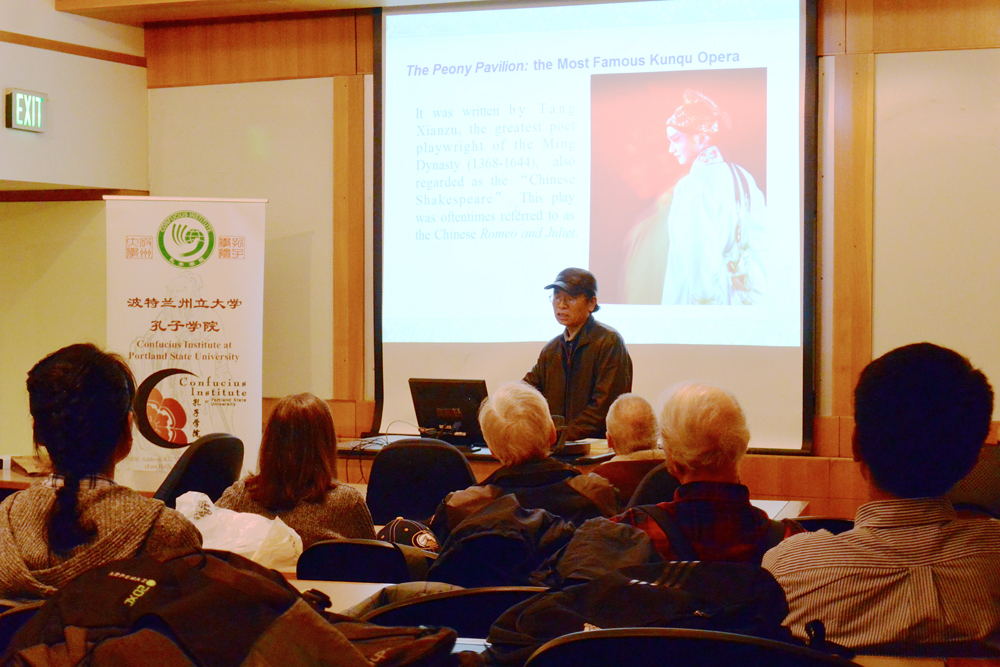While food as religion may be a staple for many people in our hometown, German director Doris Dorrie is unable to marry those two subjects successfully in her new documentary, How to Cook Your Life.
Half-baked film: How to Cook Your Life
While food as religion may be a staple for many people in our hometown, German director Doris Dorrie is unable to marry those two subjects successfully in her new documentary, How to Cook Your Life.
The film follows Edward Espe Brown, a Bay Area cookbook-author, chef and Zen monk, teaching his practice of cooking for groups of faithful Buddhists on retreats. In California, Brown was the chef at the Tassajara Zen Mountain Center for years, where much of the movie was filmed, and co-founded San Francisco’s well-known Greens Restaurant.
We see Brown making dough, cutting vegetables and talking about himself and his experiences in Zen kitchens and in the real world. Lovely shots of the serene landscape and the retreat center are featured, and people young and old listen to Brown’s wisdom and cook together.
The problem here is that Brown is in the midst of teaching people who already believe in him, the religion and his acclaim. And the filmmaker is making the assumption that we movie watchers care and are connected at that same level. The audience is not given the opportunity to weigh in on Zen Buddhism and its very basic tenets, because they remain undefined.
Perhaps that’s far too serious an approach, yet a casual observer somehow feels poorly equipped to observe. Sure, we hear chanting, watch people meditating, see Brown slowly and deliberately teaching how to knead dough, but what is it all supposed to mean?
Brown, fortunately, can laugh at himself, and often does-and his on-screen audience just eats it up. So the tone of the film is one of amused seriousness. Feeling like a series of conferences that ended up on film and were later put together in a more meaningful way, the movie doesn’t keep the audience in the loop.
More personal moments with Brown are often uncomfortable. He spends minutes explaining his frustration with a sponge that won’t go where he wants it. He pokes half-heartedly at the plastic of a cheese container, trying to open it with his hands and demonstrating his exasperation.
It is hard to imagine Brown using his approach in a commercial kitchen. His silence and slow, deliberate motions alone would probably cause an accident. His self-stated impatience boils beneath the surface.
This is such a well-meaning movie, but it is almost painful to watch as it sinks into preachy, cliché moments. Yet there are some gems among those weeds. An obligatory visit to an organic farm yields a farmer using ground-up turkey guts as fertilizer for his vegetables. Brown recounts his quest for a perfect biscuit, trying for years to make one just like the ones he had as a kid-until he pops open the Pillsbury package of his youth, realizing how yucky the biscuits really were.
Brown recalls asking his Zen master for some wisdom about cooking. “When you cut the carrots, cut the carrots,” said Suzuki Roshi, a jolly-faced monk seen in numerous vintage clips. This is the most useful piece of kitchen advice the movie offers: be centered, be focused and ignore everything else. Restaurant and home kitchens offer distractions at every turn. It is certainly a wise metaphor for life as well.
Zen Buttermilk Biscuits
3 cups all-purpose flourフ_ teaspoon salt1 tablespoon baking powderフ_ teaspoon baking soda2 tablespoons sugar1 stick unsalted butter, cold1フ_ cups buttermilk
Preheat the oven to 350 degrees. Be thankful for the work that the oven does.
Combine the dry ingredients in a bowl. Stir the powdery flour mixture with intention, noticing how the flour cakes and crumbles as the spoon goes round and round. Take a deep breath.
Get the butter from the fridge, and pause while opening the door to realize how lucky we are to have a device to keep food cold. Take a knife, noticing its shape and color, and cut the butter into small pieces, noticing how the butter yields to the sharp knife. Add the butter to the dry ingredients, and work quickly, either with hands or a mixer, until it is a mealy texture. Notice the feel of the dough as it begins to collect under your fingernails, or listen intently to the sound of the mixer as it breaks the butter into small lumps. Slowly add the buttermilk, being cautious not to over-mix the dough, until it comes together. It is okay to have some flaky bits unincorporated.
Turn dough out onto a floured surface. Dust your hands with the fine particles of flour so that the dough doesn’t stick. Pat together, feeling the cool stickiness of the dough, and form a rough disk about two inches thick. Use a biscuit cutter or inverted mug, dunking it in flour each time, to cut out biscuits. Feel the patience seeping through your body as the dough inevitably gets stuck onto the inside of the biscuit cutter. Place the biscuits onto a sheet pan or cookie sheet, and bake until they are firm to the touch. Do not mind the molten hot surface as you touch it with your finger.
How To Cook Your Life opens Dec. 7 at Cinema 21 (616 N.W. 21st Ave.)





